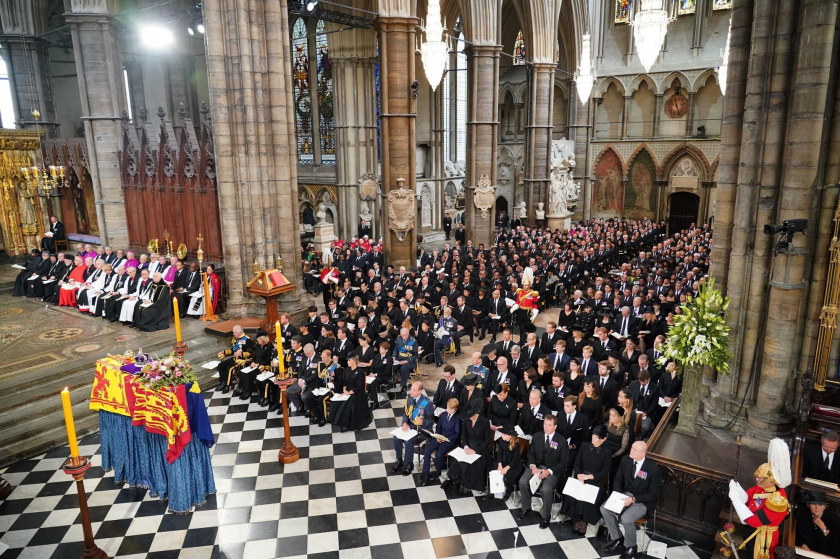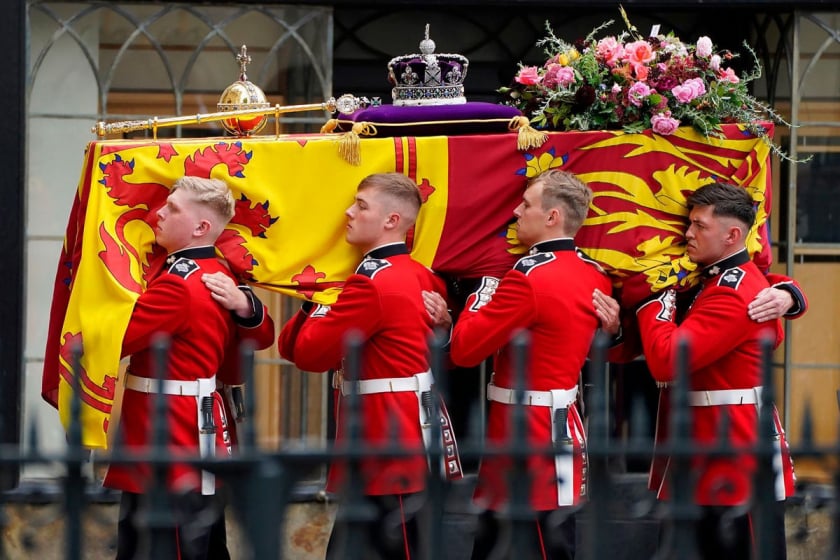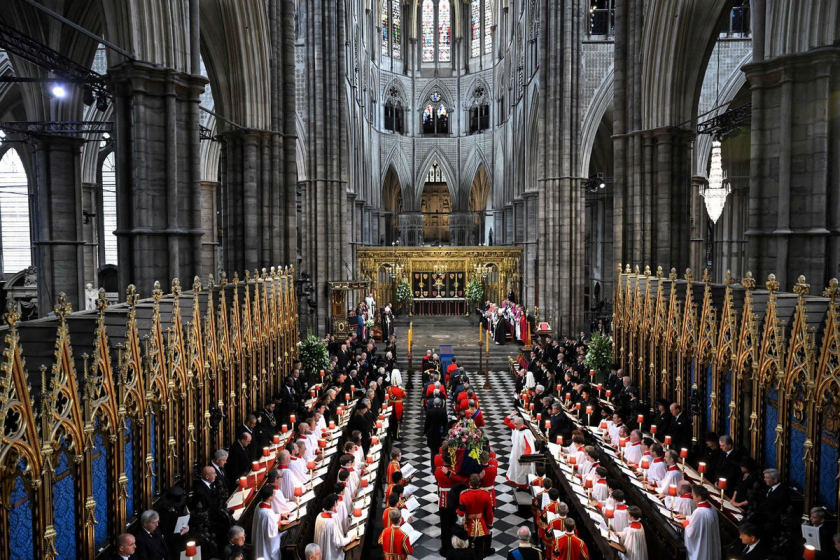The coffin of Queen Elizabeth II was carried from the Palace of Westminster to Westminster Abbey for the funeral on September 19.
Westminster Abbey, officially known as the Collegiate Church of St. Peter at Westminster, is located to the west of the Palace of Westminster in London, England. It is the site of the coronation of British kings and queens, and the burial place of many members of the British Royal Family and many other famous figures in British history.

A view of the official funeral of Queen Elizabeth II at Westminster Abbey
After the ceremonies, the coffin was lowered slowly into the Royal Crypt below the chapel by an electric elevator system. The Royal Crypt was built in the early 19th century and currently holds the coffins of many members of the royal family, including Prince Philip.
In the early morning of September 20, the coffins of Queen Elizabeth II and her husband Philip were brought to their final resting place, the King George VI Memorial Chapel, a small corner of St. George's Chapel.

The funeral of the late Queen Elizabeth II took place on September 19.
Westminster Abbey was commissioned by the Queen, completed in 1969, and is the final resting place of the Queen's parents and only sister, Princess Margaret.
According to British media, 2,000 officials and guests, from the new British King Charles, kings, queens and senior members of royal families around the world to world leaders, including US President Joe Biden and representatives of the British public who helped fight the Covid-19 pandemic, were present at Westminster Abbey in London to attend the state funeral on September 19.
The bells of Westminster Abbey - where coronations, weddings and funerals of British kings and queens are held - will ring 96 times, symbolising Queen Elizabeth II's 96th birthday.

At Westminster Abbey, where the Queen's funeral took place, 96 bells rang out in tribute, representing the late monarch's 96 years of life.
Westminster Abbey is a building that still retains its architectural and historical value in England. For over a thousand years, the abbey has stood tall and majestic, reflecting the eternal cultural beauty of the foggy land.
In 1245, Westminster Abbey was built based on the model of Edward's Church. Unfortunately, due to the time of the famine, the construction process was slowed and encountered many difficulties. After completion, Westminster Abbey was more than 2970 m2.2, mainly from precious and beautiful materials. These are limestone from the Cean region of France, Reigate sandstone in Surrey and marble from Purbeck in England. The harmonious blend of materials as well as meticulous, professional construction has created a majestic monastery as today.
The architecture of Westminster Abbey is complex and unique, containing many special meanings in its mystical symbols. Westminster Abbey is located in the central area of London, close to Big Ben.
Inside the monastery are the soaring domes that are intertwined, enough to impress visitors. Moreover, the typical Norman architectural features such as curved archways, large pillars in the hallways, etc. will also attract visitors' curiosity. The main sanctuary area has a majestic and magnificent beauty because this is where the mass is held with sophisticated and meticulous arrangements of furniture and seats.
The monastery is the venue for over 16 royal weddings and the resting place of over 17 members of the royal family, mostly the King and Queen of England, clergy, and nobles, including some notable figures such as: Queen Elizabeth I, Queen Mary, Issac Newton, Darwin...

The funeral was attended by world leaders, thousands of dignitaries, and the people of the United Kingdom.
Westminster Abbey in England is made from Reigate sandstone in Surrey, limestone from France and marble from Purbeck, Dorset, England. The most impressive feature of this abbey is the Norman architecture with curved archways and large supporting columns and the cloister.
The interior of the monastery's sanctuary is a unique series of high Gothic arches that crisscross each other. The sanctuary is where the Mass is held, with exquisite and meticulous woodwork.
The entire cathedral's architecture is representative of Gothic architecture, very magnificent and solemn, the sunlight through the crystal glass spreads a splendid light. Westminster Cathedral was started to be built in the 10th century. Since the accession of William the Conqueror in 1066, the cathedral has become the coronation church of the royal family. For more than a thousand years, many famous English people have been buried there, honoring them for future generations. Over the centuries, millions of churchgoers have come here to attend the ceremonies.


































